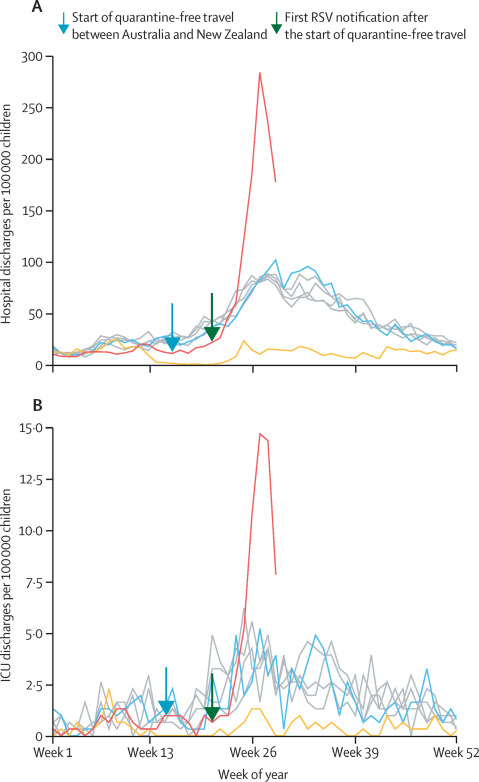Exotic Diseases of Concern to New Zealand
How Aotearoa New Zealand's health has been affected by respiratory diseases and public health emergencies of international concern (PHEIC) which cross our border.
On this page:
Two priority notifiable diseases entered New Zealand since 2016
There are a number of respiratory diseases and PHEICs classified as notifiable within New Zealand. Some of these are prioritised by EHINZ as they pose a considerable threat to the health of our communities. There is also a separate page that focuses on mosquito-borne diseases which cross New Zealand's borders. Table 1 outlines the priority notifiable diseases to New Zealand as well as case numbers in recent years.
Table 1: Summary of notifiable respiratory diseases and PHEICs in New Zealand, 2016–20.
| Notifiable Disease |
Total cases 2016–20 |
Peak year (cases that year) |
Notes |
|
Measles |
2,370 |
2019 (2,213 cases) |
From 2016–20, 48 cases were confirmed to have overseas origins primarily from South East Asia (18 cases) and the Pacific (17 cases). |
| COVID-19 * | 2,174 | 2020 (2,174 cases) |
21% of cases in 2020 were in managed isolation. This fell to just 9% in 2021 due to a large outbreak that began in August. |
| Ebola * | 0 | NA |
No cases have ever been recorded in New Zealand. |
| Polio * | 0 | NA |
The last wild poliovirus case in New Zealand occurred in 1977. |
| Non-seasonal influenza | 0 | NA |
H1N1 was the last non-seasonal influenza to enter New Zealand in 2009, resulting in 1,122 hospitalisations and 35 deaths. |
| Middle Eastern Respiratory Syndrome | 0 | NA | No cases have ever been recorded in New Zealand. |
Notes: * This disease was a public health emergency of international concern between 2016–20.
Measles, COVID-19 and non-seasonal influenza
The 2019 measles outbreak resulted in 2,213 confirmed cases within New Zealand [1]. No deaths were recorded. Key characteristics of the outbreak include:
- Children, aged 0–5 years, had the highest infection rate.
- 80% of cases were not vaccinated.
- Pacific peoples experienced an infection rate four times greater than any other ethnic group.
- The infection rate in Counties Manukau District Health Board (DHB) was almost three times greater than the next most affected DHB, Northland.
In comparison, there were 2,174 confirmed or probable cases of COVID-19 in 2020 and a further 12,027 in 2021 [2]. There were 51 deaths as of 31 December 2021. For regular updates on cases and demographic breakdowns visit the Ministry of Health website. Data surrounding the broader impacts of the pandemic are published by StatsNZ.
The last non-seasonal influenza that spread within New Zealand was H1N1 in 2009. At the time there were 3,211 confirmed cases and 35 deaths. Seroprevalence testing carried out after the outbreak estimated as many as 800,000 individuals were exposed to H1N1 during the outbreak throughout New Zealand [3].
Issues for future patterns of infectious disease
Due to the intense focus on COVID-19, many countries have ceased or delayed their measles vaccination and eradication campaigns [4]. As a result, there are concerns that measles cases could increase globally in the coming years, as international travel becomes more common.
While they are not priority notifiable diseases, respiratory syncytial viruses (RSV) and other seasonal influenzas have the potential to spike, leading to a strain on the healthcare sector. A review in The Lancet Child and Adolescent Health discusses how low exposure in 2020 and 2021 could lead to a spike as borders re-open [5]. Figures 1A and 1B present the spike in RSV cases as borders opened to Australia in April of 2021, with five times the number of discharges recorded compared to the same time in previous years.
Figure 1: Weekly discharge data from publicly funded hospitals (A) and ICUs (B) for children aged 0–4 years with bronchiolitis (ICD-10 code J21) in New Zealand, 2015–2021.

Notes: Full years of crude rates are presented for 2015–2018 (four grey lines), 2019 (blue line) and 2020 (yellow line), and the first 29 weeks of data for 2021 (red line). Blue and green arrows denote when quarantine-free travel with Australia began in 2021 and the first RSV notification after travel began respectively. For more information relating to the graphs visit the original article [5].
Source: [5].
